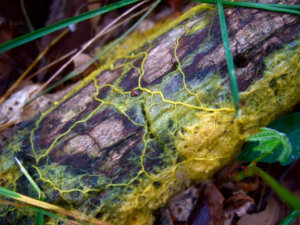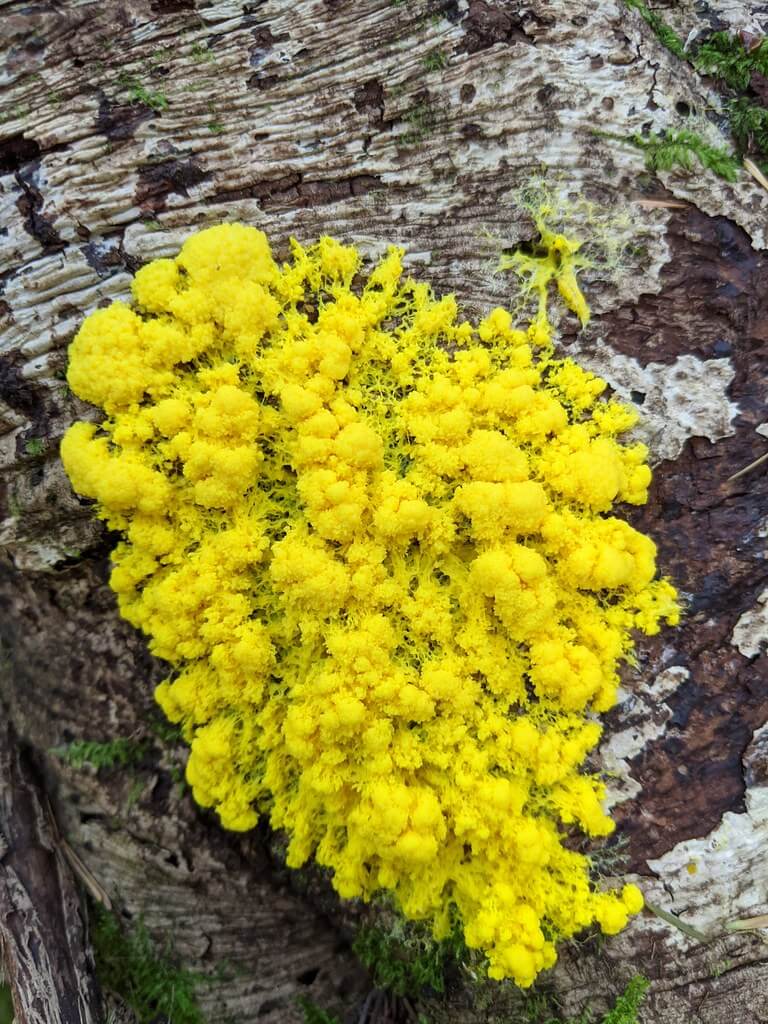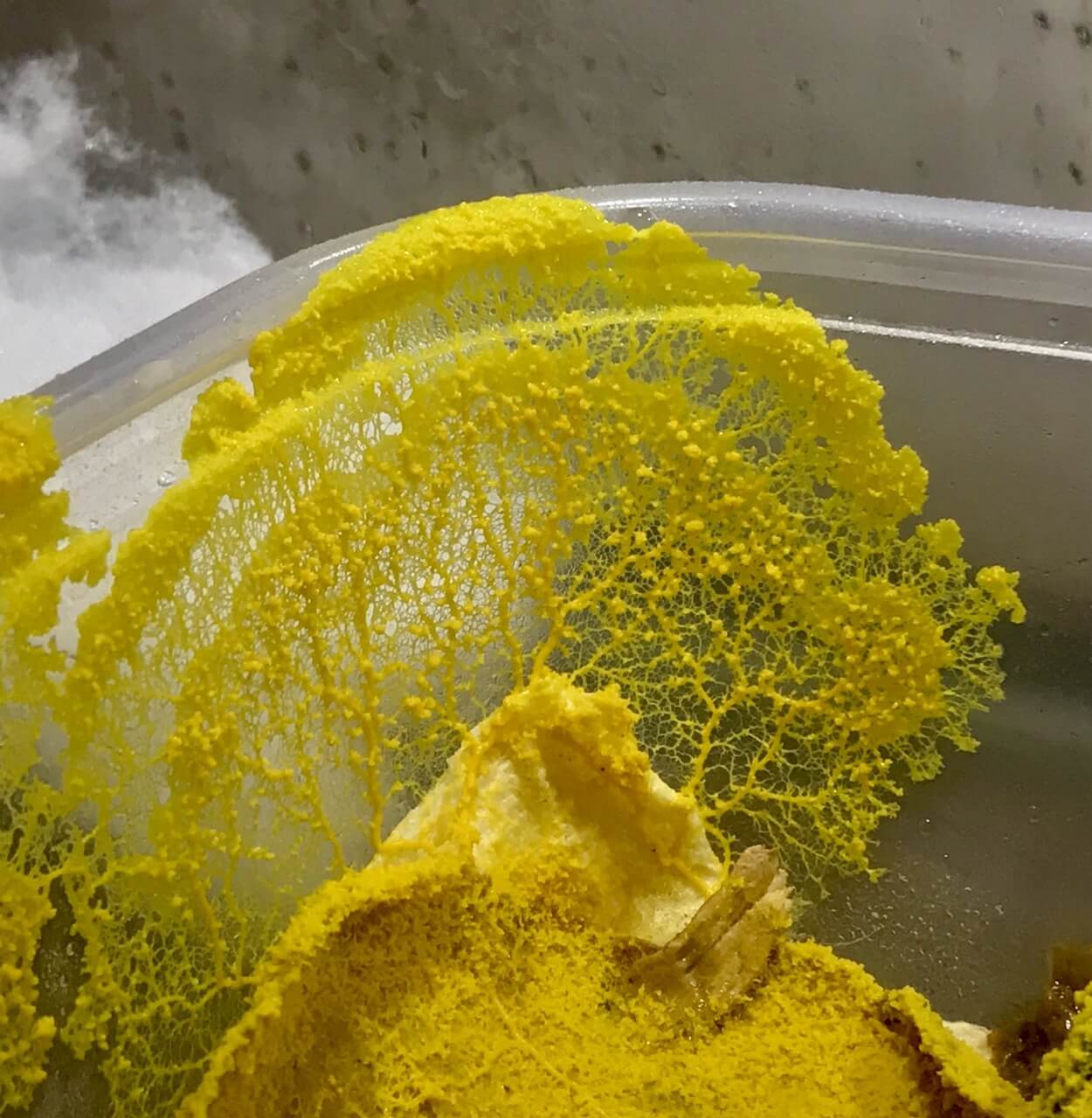"The Blob": The Mysterious Organism with 720 Sexes and no Brain


Written and verified by the biologist Cesar Paul Gonzalez Gonzalez
In nature, there are many fascinating living species that most people are unaware of. Among these organisms we find the blob, a mysterious being with 720 “sexes” that doesn’t have a brain or a central nervous system. Although, in appearance, it’s a “simple” mucilaginous mold, it has incredible capabilities.
The scientific name of this species is Physarum polycephalum. It’s part of the myxomycetes, a curious class that at first glance looks like a living jelly. Read on and find out more about the mysterious organism known as the blob.
Why is it called “the blob”?
This species of mucilaginous mold was given the name “the blob“ in homage to a movie of the same name, released in 1958. The film is about a strange jelly-like creature that attacks a small town and is capable of “disintegrating” people.

Physical characteristics of “the blob”
As previously mentioned, the blob is a yellow, white, pink, or red jelly-shaped organism that’s able to change its shape and appearance. However, its movement is so slow that it’s more like a mold that invades surfaces. It’s usually found in damp, warm, and cool places on different objects, such as tree bark or mushrooms.
Although, at first glance, it does not look like a very impressive living being, its interior contains so many secrets. Contrary to plants and animals, the blob isn’t composed of “cells”, but is a gigantic mass in which many nuclei (plasmodium) are immersed. Viewed another way, it’s a large cell containing many nuclei, which makes it unnecessary for it to need a brain.
Blobs are able to fuse
Because they’re composed of a single “cell”, when two different individuals meet, they may be able to fuse. This not only allows a new, larger individual to form, but they also appear to synchronize their tasks and share their genetic information. Of course, for this to happen, both organisms must be compatible.
Why do they have so many “sexes”?
Sex can be defined as the characteristic of living things to recombine their genetic material with other individuals. Although this is easy to define in humans (male and female), there are living beings such as the blob that maintain a more complicated mechanism.
In the case of mucilaginous molds, their “sex” isn’t determined by a sex chromosome, but by a specific gene that has about 720 variants. When two individuals meet and each has a different variant of this gene, they come together to recombine their genome (they’re compatible). Conversely, if both have the same variant, they reject each other (they’re incompatible).
The blob is able to learn
Although the blob lacks a brain, it seems to be able to process different complex cognitive functions. In fact, several experiments have shown that it has the ability to “memorize” and “learn” new things to solve problems. For example, getting out of a maze with ease, evading toxic compounds, or getting used to its environment.
While it’s true that this mucilaginous mold shows complex abilities, there is some debate as to whether these are actually “learning” processes. Some specialists denote that it seems to be more of a habituation process, which doesn’t necessarily entail complex cognitive functions.

The blob is very resilient
As if that weren’t enough, apart from having all of the above abilities, it has also been found to be able to withstand harsh environments. To do this, it releases much of the water it contains inside its body and “dries out”, creating a hard, rigid mass that encapsulates its interior and protects it.
As soon as the environmental conditions are favorable, the blob regains its original shape and resumes all its natural activities. In this way, it can cope with drastic changes in the weather. Moreover, thanks to these capabilities, it has become a popular species in laboratories as a research model.
As you can see, the blob is an interesting living creature that breaks with many ideas and scientific knowledge. However, several aspects of its nature are still unknown, so it’s very likely that in the future more incredible characteristics of this species will be discovered.
In nature, there are many fascinating living species that most people are unaware of. Among these organisms we find the blob, a mysterious being with 720 “sexes” that doesn’t have a brain or a central nervous system. Although, in appearance, it’s a “simple” mucilaginous mold, it has incredible capabilities.
The scientific name of this species is Physarum polycephalum. It’s part of the myxomycetes, a curious class that at first glance looks like a living jelly. Read on and find out more about the mysterious organism known as the blob.
Why is it called “the blob”?
This species of mucilaginous mold was given the name “the blob“ in homage to a movie of the same name, released in 1958. The film is about a strange jelly-like creature that attacks a small town and is capable of “disintegrating” people.

Physical characteristics of “the blob”
As previously mentioned, the blob is a yellow, white, pink, or red jelly-shaped organism that’s able to change its shape and appearance. However, its movement is so slow that it’s more like a mold that invades surfaces. It’s usually found in damp, warm, and cool places on different objects, such as tree bark or mushrooms.
Although, at first glance, it does not look like a very impressive living being, its interior contains so many secrets. Contrary to plants and animals, the blob isn’t composed of “cells”, but is a gigantic mass in which many nuclei (plasmodium) are immersed. Viewed another way, it’s a large cell containing many nuclei, which makes it unnecessary for it to need a brain.
Blobs are able to fuse
Because they’re composed of a single “cell”, when two different individuals meet, they may be able to fuse. This not only allows a new, larger individual to form, but they also appear to synchronize their tasks and share their genetic information. Of course, for this to happen, both organisms must be compatible.
Why do they have so many “sexes”?
Sex can be defined as the characteristic of living things to recombine their genetic material with other individuals. Although this is easy to define in humans (male and female), there are living beings such as the blob that maintain a more complicated mechanism.
In the case of mucilaginous molds, their “sex” isn’t determined by a sex chromosome, but by a specific gene that has about 720 variants. When two individuals meet and each has a different variant of this gene, they come together to recombine their genome (they’re compatible). Conversely, if both have the same variant, they reject each other (they’re incompatible).
The blob is able to learn
Although the blob lacks a brain, it seems to be able to process different complex cognitive functions. In fact, several experiments have shown that it has the ability to “memorize” and “learn” new things to solve problems. For example, getting out of a maze with ease, evading toxic compounds, or getting used to its environment.
While it’s true that this mucilaginous mold shows complex abilities, there is some debate as to whether these are actually “learning” processes. Some specialists denote that it seems to be more of a habituation process, which doesn’t necessarily entail complex cognitive functions.

The blob is very resilient
As if that weren’t enough, apart from having all of the above abilities, it has also been found to be able to withstand harsh environments. To do this, it releases much of the water it contains inside its body and “dries out”, creating a hard, rigid mass that encapsulates its interior and protects it.
As soon as the environmental conditions are favorable, the blob regains its original shape and resumes all its natural activities. In this way, it can cope with drastic changes in the weather. Moreover, thanks to these capabilities, it has become a popular species in laboratories as a research model.
As you can see, the blob is an interesting living creature that breaks with many ideas and scientific knowledge. However, several aspects of its nature are still unknown, so it’s very likely that in the future more incredible characteristics of this species will be discovered.
All cited sources were thoroughly reviewed by our team to ensure their quality, reliability, currency, and validity. The bibliography of this article was considered reliable and of academic or scientific accuracy.
- Shirakawa, T., Gunji, Y. P., & Miyake, Y. (2011). An associative learning experiment using the plasmodium of Physarum polycephalum. Nano communication networks, 2(2-3), 99-105.
- Oettmeier, C., Brix, K., & Döbereiner, H. G. (2017). Physarum polycephalum—a new take on a classic model system. Journal of Physics D: Applied Physics, 50(41), 413001.
- Howard, F. L. (1931). The life history of Physarum polycephalum. American journal of botany, 116-133.
- Redfield, R. J. (2001). Do bacteria have sex?. Nature Reviews Genetics, 2(8), 634-639.
- Adler, P. N., & Holt, C. E. (1975). Mating type and the differentiated state in Physarum polycephalum. Developmental biology, 43(2), 240-253.
This text is provided for informational purposes only and does not replace consultation with a professional. If in doubt, consult your specialist.








